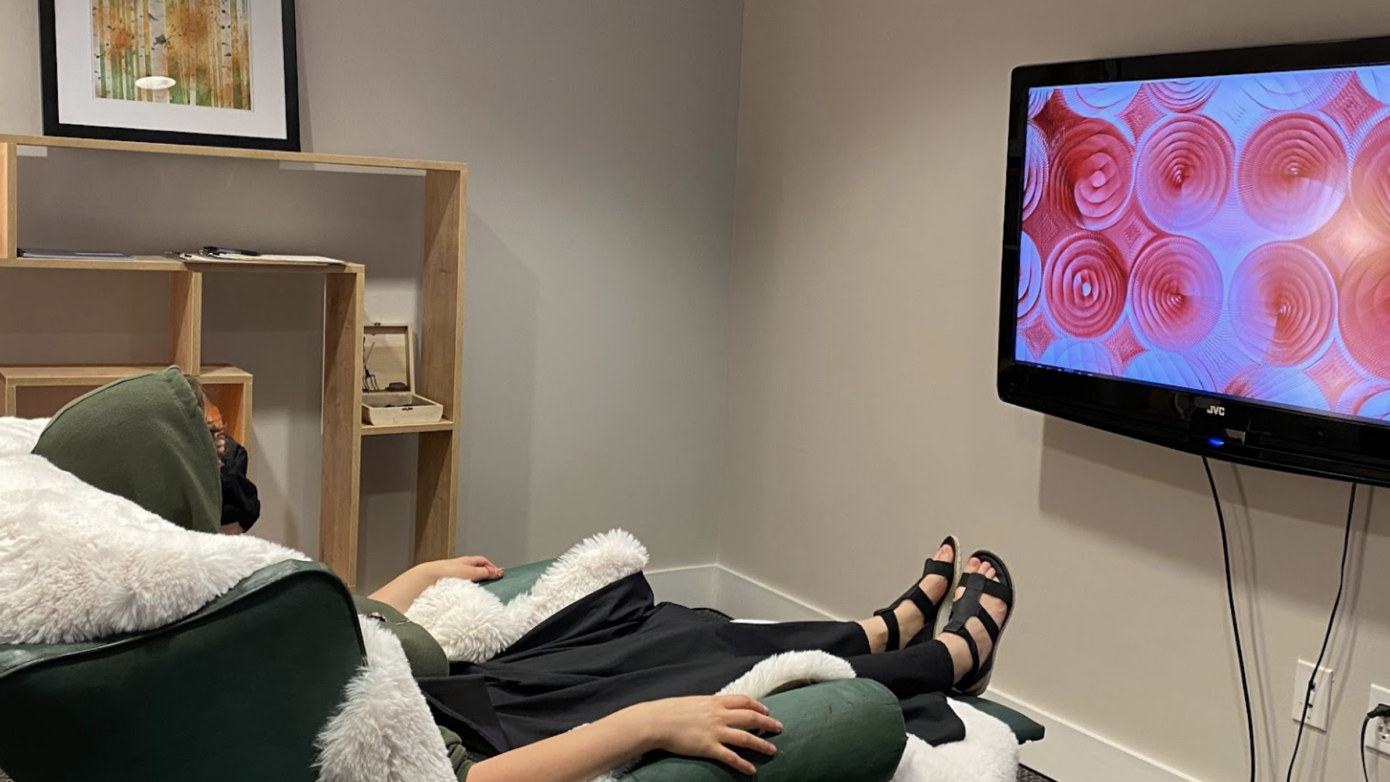By: Allison M. Payne
Sourced from Massage Magazine
The word concussion typically comes to mind when you think of traumatic events such as car accidents.
But for professional athletes, especially those who play football, concussion can be part of a normal day’s work—and according to NFL injury statistics released for the 2017 season, this type of head injury is becoming more common, with 281 reported this past year. That’s an increase of more than 13 percent from the previous year.
The effects of concussion often extend far beyond the acute stage of injury, and athletes seek out many forms of treatment to deal with them.
One complementary health intervention that shows promise in the addressing of post-concussion symptoms is CranioSacral Therapy (CST).
“[CST] is perfect for football players,” said Ricky Williams, a former NFL running back who also played a season in the Canadian Football League.
Williams, who trained in CST through the Upledger Institute International (UII) and is currently studying Chinese medicine in Los Angeles, partnered with UII in 2014 and 2015 to offer two intensive therapy programs to football players with post-concussion symptoms.
The programs produced a pilot study on the effects of the therapy on this type of injury,
published in 2017 in the journal Medical Acupuncture, “CranioSacral Therapy and Visceral Manipulation: A New Treatment Intervention for Concussion Recovery,” found that 10 sessions of specific CST, visceral manipulation and neural manipulation resulted in statistically greater improvements in pain intensity, range of motion, memory, cognition, and sleep in concussed patients.
What is CranioSacral Therapy?
CST, according to a definition on UII’s website, is a “gentle, hands-on approach that releases tensions deep in the body to relieve pain and dysfunction and improve whole-body health and performance.”
The modality targets the membranes and fluid surrounding the brain and spinal cord. Injuries to any part of the body, CST practitioners say, can manifest in the central nervous system, so releasing restrictions there can facilitate self-healing in other areas of the body.
Williams first discovered CST when he was playing football for the Toronto Argonauts. He noted that many of the team’s trainers knew the technique and offered it routinely to players.
“I noticed in our training room, after practice sometimes, guys would be laying on the table, and their trainers would have their hands underneath the guys’ heads,” Williams told MASSAGE Magazine.
Intrigued, he tried it out one day and then started receiving CST weekly; soon he was taking courses in it through UII.
Later, in 2009, he received CST through one of UII’s intensive programs. In his subsequent season, playing for the Miami Dolphins, he rushed more than 1,000 yards, breaking an NFL record.
“It changed my life,” he said of his CST sessions. “I had a great season, and I attribute a lot of it to the work that I did at [UII].”
What Is Concussion?
Football players can suffer concussions in any number of ways during practice or games. A concussion, also known as a mild traumatic brain injury (MTBI), typically occurs after a blow to the head or violent movement of the head or body, and might or might not make you lose consciousness, according to the Mayo Clinic’s website.
A concussion may cause symptoms such as headache, memory loss, ringing in the ears, or even nausea, vomiting and slurred speech. These effects usually resolve in a matter of hours or days, but in some cases concussion can have longer-term effects.
Repeated head trauma, such as that experienced in combat or in rough sports like football, can cause permanent and debilitating problems, called post-concussion syndrome, or even develop into what is now known as chronic traumatic encephalopathy (CTE).
CTE symptoms, according to the Mayo Clinic, can include cognitive problems, poor impulse control, memory loss, aggression or dementia, among others.
March is the Brain Injury Association of America’s Brain Injury Awareness Month; massage therapists and clients can learn more about concussion and CTE from the association.
Another article published recently on this topic was “CranioSacral Therapy, Brain Injury, and American Football: Time for a Convergence,” by Eric Leskowitz, MD, published in The Journal of Alternative and Complementary Medicine.)
Concussions and CTE
Most people with concussions make full recoveries, but much attention has been paid lately to the prevalence of this injury in football at all levels—professional, college, high school and Pop Warner.
The NFL has faced criticism for not taking action to address the prevalence of concussion and CTE, and many athletes now retired from the game are discovering the long-term health effects of repeated head-and-body trauma.
“All these injuries accumulate,” said Chas Perry, PhD, CSTD, one of the organizers of UII’s concussion programs. “So you have a lot of head injury, you have a lot of injuries in various parts of the body, and over time that takes a toll on people.”
Williams, as a football player himself, has long been aware of how repetitive trauma can affect the body. While he believes it’s important to work on prevention of concussion and cte, he also advocates for investigating new techniques for counteracting these effects, including those outside the realm of conventional medicine.
“I’ve realized that almost every square inch of my body has been traumatized at some point in time over my football career, whether it’s from being hit, being tackled [or] being fallen on,” said Williams.
“Going through healing sessions where I’m receiving work and feeling energy and life force, mobility, blood flow, come back into these areas of my body, it’s really mind-blowing,” he said.
Positive Outcomes
UII’s concussion program, held in 2014 and again in 2015, conducted research involving 11 ex-football players diagnosed with post-concussive syndrome. The research excluded those suffering from recent head trauma, in order to specifically study the long-term effects of concussion. (Another program is planned for late 2018.)
Each time, athletes participated in a week of intensive therapy in West Palm Beach, Florida, performed by a team of health care professionals; therapies given twice daily for two hours per session included CST, visceral manipulation and neural manipulation.
Outcomes were measured before treatment, after treatment and three months post-treatment, and included the effects on cognitive tasks, quality of life, headaches, dizziness, pain, range of motion, balance and sleep, among others.
Statistically significant outcomes, according to the study’s abstract, existed in measures of pain intensity, cognition, memory, sleep and range of motion.
Anecdotally, many of the participants in these studies reported rapid, dramatic results. In addition to improvements in pain and other physical complaints, many also reported positive changes in cognition and emotion.
For example, said Perry, some former football players who have suffered head trauma have trouble modulating strong emotions, such as anger and aggression; others might develop depression, experience irrational fears or have trouble concentrating.
“You have a lot of very unusual phenomena that can be uniquely individual, but they’re all basically kind of brain trauma related,” Perry said.
“During the intensive, the therapists used persistent but gentle hand pressure at various contact points and areas on my body. Sometimes I questioned if anything was actually happening, but at the end of each session I felt noticeably better,” wrote Clarence Vaughn, a former member of the Washington Redskins, in a testimonial about the program. “By the end of the week I was a new man. The pain in my neck, shoulders and hips was gone!”
Eric Williams, a former member of the Washington Redskins and Detroit Lions, also wrote a testimonial to the therapies’ positive effects. “My mood, my emotions and body had such a drastic change, it’s really hard to put into words. My chronic pain was drastically reduced and my range of motion on 99 percent of my body parts increased significantly,” he wrote. “I can’t explain what they did or how they did it. All I know is, I’d do it again in [a] heartbeat.”
The results of the UII study are encouraging, but more research is needed to advance the acceptance of this therapy, said Ron Radawiec, PT, who has worked with many traumatic brain injury clients and also worked hands-on with these athletes. Yet, he acknowledged the strength of the anecdotal evidence for these therapies’ effectiveness and said the changes can be profound at the physical, emotional and cognitive levels.
“I highly recommend Upledger CranioSacral Therapy to anyone who has played football,” wrote David Meggyesy, a program participant who played for the St. Louis Cardinals in the 1960s, in a testimonial.
“CranioSacral was a revelation — what a gift.”



